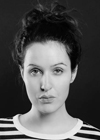I've been obsessed with shooting with natural light since day one. Early on in my photography career, I could barely afford to buy the few lenses that I really wanted, let alone all the lighting equipment I so wanted to play with. I taught myself how to work with the equipment that I had and truly perfected my skills with natural light.
Understanding how natural light works has truly contributed to my success as a working photographer in Los Angeles. I don't think you can really call yourself a photographer without understanding how shooting with natural light works. I often find myself in a situation where using strobes or a flash simply isn't possible, and I have to rely on my knowledge of natural light to pull the photo together.
Every photographer should really take the time to understand how to photograph in natural light during the early morning, middle of the day and during the golden hour. I frequently receive inquiries from new clients based on the lighting in my photographs and how natural I make the subject look, especially when photographing lifestyle images for a company. It can take time to really perfect your images with natural light, but with lots of practice and with a simple understanding of where the light should be while you're photographing your subject, you'll notice how efficient it is to photograph naturally.
Shooting With Natural Light Indoor:
When I get hired for an indoor shoot, I always ask the client what the light is like. I will either do a walkthrough of the space prior to the shoot or ask the client to send over iPhone photos of the location. Even with iPhone photos I can get an idea of what the natural light looks like. Some things to look for when examining a potential space are to look for lots of windows, skylights and bright white walls. If you're photographing portraits only in an interior setting, I always try to capture the portraits near a large window and sometimes I'll have my assistant hold a reflector to bring a little more clarity to the portrait.
Examples of portraits captured by large windows:
This photo was taken against a white wall. There was so much natural light coming in from the left side and it really gave this image a bright natural POP!

This photo was taken with a large window behind me. The subject was facing the window and the light was coming in perfectly on her face. It really brightened her skin and made it easy to capture with the right exposure.
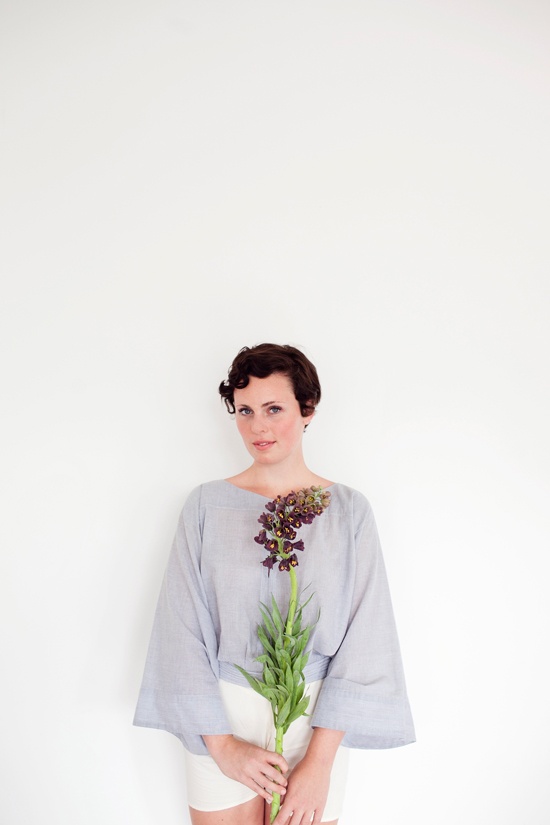
This portrait was captured in the afternoon when the sun was coming in through bedroom shutters. It was fun to play with the light creeping in through the shutters and covering only one side of the subjects face.
 Outdoor Light:
Outdoor Light:
Shooting outdoors is a great way to familiarize yourself with natural light. You will need to learn to work with three different types of outdoor light: early morning, mid day and during the golden hour.
Shooting With Natural Light In The Early Morning:
Photographing early in the morning before the sun comes out is a great time to capture your subject without harsh shadows or warm tones. This is also a great time to capture a subject in front of a colorful wall! Photographing color before the sun rises makes it easier to get the perfect color tone in post-processing.
Examples of photos I've taken early in the morning:


 Mid-Day:
Mid-Day:
Mid-day is not the most ideal time of day to be photographing portraits, but it's good to familiarize yourself with all times of day. During this time, there are a lot of shadows in the photographs, and often, if you're photographing a portrait, you may have to get the subject to wear sunglasses so that they aren't squinting the entire time. This is also a difficult time to figure out the proper exposure. When photographing, make sure your ISO is low; ISO 100 should do the trick. Because I live in Los Angeles, I really like photographing bright and sunny photographs in the middle of the day, which truly embody the LA vibe.
Examples of photos taken while the sun was high in the sky:

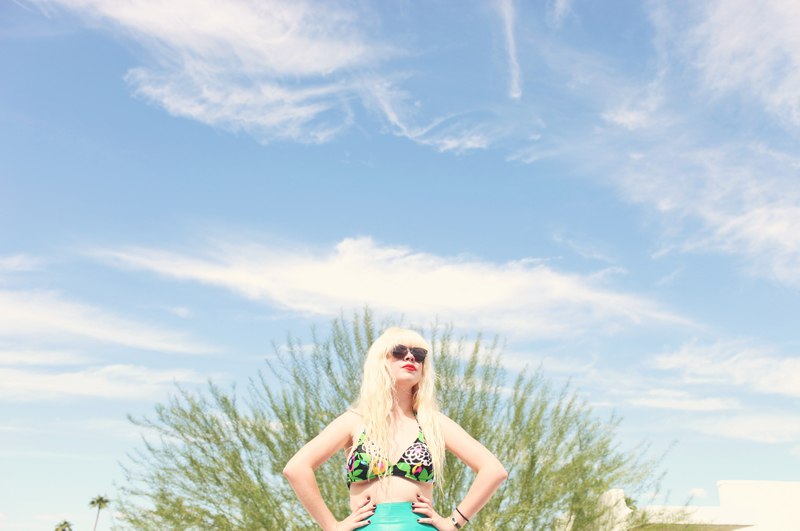
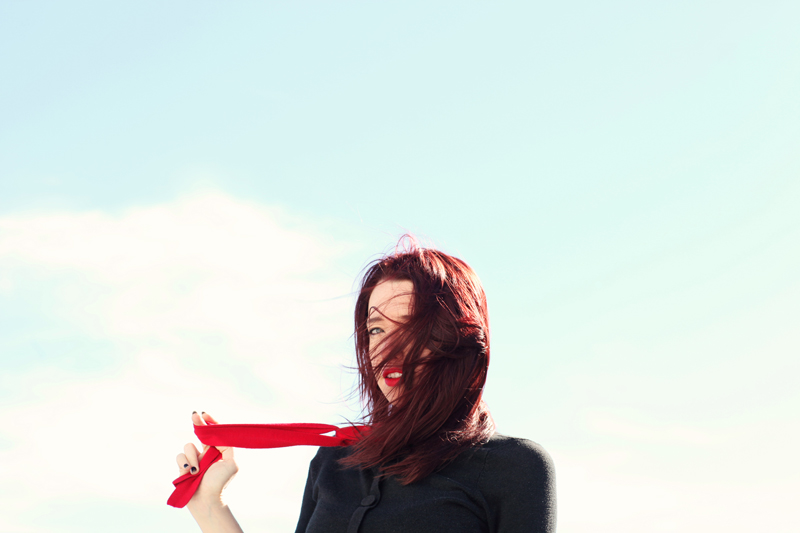 The Golden Hour:
The Golden Hour:
This is the magic time to photograph. The golden hour is the hour of light right after the sunrise and the last hour of light right before the sun sets. There's no better way of capturing warm tones and soft effects; it can really give a photograph a romantic effect. This is also a great time to experiment with sun flares and bokeh.
Examples of photos I've taken in the golden hour:

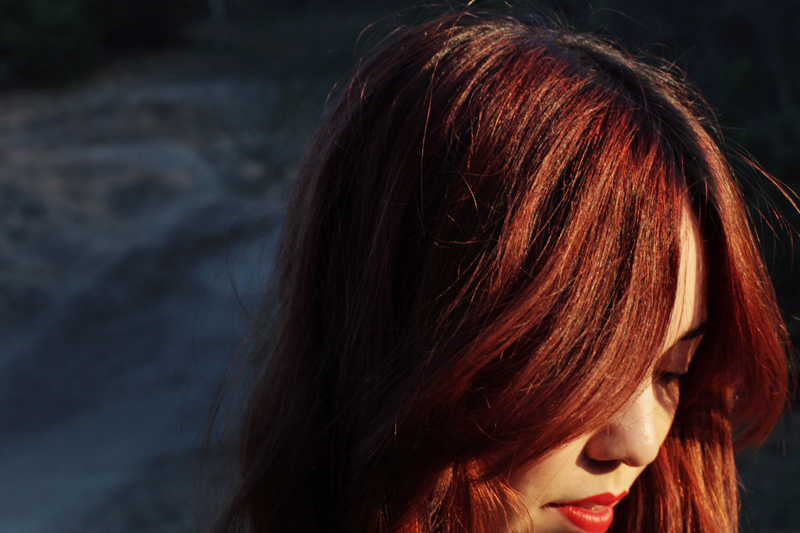
Working with natural light is one of the most important things to master early on in your photography career. I am incredibly grateful for the knowledge I acquired when I first began photographing and believe it has added value to my personal aesthetic. Always remember to have fun experimenting and play with the light!
 This photo was taken with a large window behind me. The subject was facing the window and the light was coming in perfectly on her face. It really brightened her skin and made it easy to capture with the right exposure.
This photo was taken with a large window behind me. The subject was facing the window and the light was coming in perfectly on her face. It really brightened her skin and made it easy to capture with the right exposure.
 This portrait was captured in the afternoon when the sun was coming in through bedroom shutters. It was fun to play with the light creeping in through the shutters and covering only one side of the subjects face.
This portrait was captured in the afternoon when the sun was coming in through bedroom shutters. It was fun to play with the light creeping in through the shutters and covering only one side of the subjects face.
 Outdoor Light:
Shooting outdoors is a great way to familiarize yourself with natural light. You will need to learn to work with three different types of outdoor light: early morning, mid day and during the golden hour.
Shooting With Natural Light In The Early Morning:
Photographing early in the morning before the sun comes out is a great time to capture your subject without harsh shadows or warm tones. This is also a great time to capture a subject in front of a colorful wall! Photographing color before the sun rises makes it easier to get the perfect color tone in post-processing.
Examples of photos I've taken early in the morning:
Outdoor Light:
Shooting outdoors is a great way to familiarize yourself with natural light. You will need to learn to work with three different types of outdoor light: early morning, mid day and during the golden hour.
Shooting With Natural Light In The Early Morning:
Photographing early in the morning before the sun comes out is a great time to capture your subject without harsh shadows or warm tones. This is also a great time to capture a subject in front of a colorful wall! Photographing color before the sun rises makes it easier to get the perfect color tone in post-processing.
Examples of photos I've taken early in the morning:


 Mid-Day:
Mid-day is not the most ideal time of day to be photographing portraits, but it's good to familiarize yourself with all times of day. During this time, there are a lot of shadows in the photographs, and often, if you're photographing a portrait, you may have to get the subject to wear sunglasses so that they aren't squinting the entire time. This is also a difficult time to figure out the proper exposure. When photographing, make sure your ISO is low; ISO 100 should do the trick. Because I live in Los Angeles, I really like photographing bright and sunny photographs in the middle of the day, which truly embody the LA vibe.
Examples of photos taken while the sun was high in the sky:
Mid-Day:
Mid-day is not the most ideal time of day to be photographing portraits, but it's good to familiarize yourself with all times of day. During this time, there are a lot of shadows in the photographs, and often, if you're photographing a portrait, you may have to get the subject to wear sunglasses so that they aren't squinting the entire time. This is also a difficult time to figure out the proper exposure. When photographing, make sure your ISO is low; ISO 100 should do the trick. Because I live in Los Angeles, I really like photographing bright and sunny photographs in the middle of the day, which truly embody the LA vibe.
Examples of photos taken while the sun was high in the sky:


 The Golden Hour:
This is the magic time to photograph. The golden hour is the hour of light right after the sunrise and the last hour of light right before the sun sets. There's no better way of capturing warm tones and soft effects; it can really give a photograph a romantic effect. This is also a great time to experiment with sun flares and bokeh.
Examples of photos I've taken in the golden hour:
The Golden Hour:
This is the magic time to photograph. The golden hour is the hour of light right after the sunrise and the last hour of light right before the sun sets. There's no better way of capturing warm tones and soft effects; it can really give a photograph a romantic effect. This is also a great time to experiment with sun flares and bokeh.
Examples of photos I've taken in the golden hour:

 Working with natural light is one of the most important things to master early on in your photography career. I am incredibly grateful for the knowledge I acquired when I first began photographing and believe it has added value to my personal aesthetic. Always remember to have fun experimenting and play with the light!
Working with natural light is one of the most important things to master early on in your photography career. I am incredibly grateful for the knowledge I acquired when I first began photographing and believe it has added value to my personal aesthetic. Always remember to have fun experimenting and play with the light!





